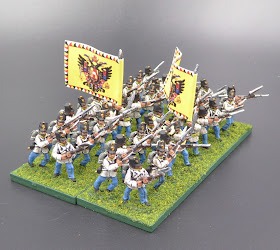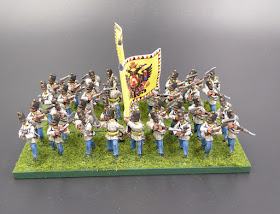 |
| Plaza de Armas |
Having returned from Peru more than one year ago, I decided a recap of the Cusco visit was long overdue. Thus, another installment of the Peruvian Adventure before I strike out on an upcoming fall adventure.
Cusco was the last stop in our two-week vacation to the Peruvian Highlands in June 2015. The last three days of the trip would be spent milling about this ancient city. While many use Cusco as an entry point to the Incan Sacred Valley and linger for a day or two before heading out into the Valley, we opted to take the road less traveled and headed straight from the airport down to Pisac in an attempt to reduce the risk of altitude sickness.
At 11,200 feet, Cusco would be the highest elevation during our two weeks. A seemingly reasonable position would be that we could acclimatize to the altitude as we made our way down the Sacred Valley. That plan worked well until we returned to Cusco at the end of the trip. Of the three of us, only my wife, Nancy, succumbed to altitude sickness and that not until the second day in Cusco. When it came on, it was sudden and vicious. Luckily, we had medication and the hotel was nearby. After a restful evening, Nancy returned as a happy traveler but I am getting ahead of the story.
 |
| Nancy on break at fountain |
We arrived in Cusco late afternoon following a speedy, one-and-a-half hour taxi ride from Agua Calientes. Not quite as white knuckled as the ride down the canyon from Cusco to Pisac on our first day but still, it had its moments. Even before the taxi trip, setting price for the cab trip to Cusco was an experience, in itself. The cluster of drivers having no English capability and us with very rudimentary language skills, the negotiation process began.
The cluster of cabbies started high, we began low. After a few minutes of scribbling numbers on upturned palms, we reached agreement on price for three passengers with luggage for the one-way trip to Cusco. We would have paid more and our driver (afterward having discovering that he wanted to return to Cusco before nightfall) likely would have taken less. On balance, both parties were satisfied with the arrangement.
 |
| Plaza de Armas - La Catedral |
 |
| Plaza de Armas - Iglesia de la Compania |
Although the driver said he could deposit us at our hotel, that was not to be. We visited Peru during their religious festival of Corpus Christi. While we saw many of the activities in Ollantaytambo earlier in the trip, we were not expecting it to linger still in Cusco. When we arrived into the center of the city, our driver motioned that the Plaza de Armas was as far as he could proceed. All streets around the plaza were barricaded. The streets and especially the Plaza were filled with people and parades.
 |
| Pachacuti in Plaza de Armas |
Having paid the driver, he disappeared leaving us among the throngs. With streets choked with people and only a rudimentary map in hand, making our way to the boutique hotel in the San Blas district, fully laden, would be a challenge. Knowing that the small hotel would be difficult to find under normal conditions, I positioned Nancy and my sister with our luggage at the corner of the Plaza de Armas and struck out on a reconnaissance mission.
Knowing the general direction, I made my way around the plaza and plunged into the backstreets of Cusco. After about ten minutes of winding through narrow streets and back alleys, I found the boutique hotel part way up the hill and in a narrow footpath behind the Iglesia de San Blas. Getting my bearings, I headed back for the girls.
 |
| Plaza de Armas from above Cusco |
The festivities continued as I squeezed through the crowds making my way back to the Plaza. Finding my companions, I assured them that I found the hotel and that the walk was neither too difficult nor too far. After ten or fifteen minutes we reached the hotel. From the outside, the place did not look like much but when the door opened we were greeted by a welcoming hostess and a peaceful atmosphere. We checked in and made our way to our rooms. Heather's accommodations were two floors down from reception while our room was one floor down. Our room consisted of a sitting room on the first level with a bedroom in a loft. Both rooms looked out over the hotel's inner courtyard. Excellent accommodation!
 |
| Breakfast at the hotel |
 |
| View of Cusco from breakfast room |
Weary from nearly two weeks in the Sacred Valley, Cusco was meant as a relaxing stop on our trip before returning home. We planned to wander around the historical center and visit the mercado and other shopping venues. A list of museums and sights to see were in hand and we set off.
 |
| Church of Santo Domingo on top of Koricancha |
One stop near the historic center was the Koricancha and Santo Domingo Church and Convent. The Koricancha was built to honor the Sun God with gold plated walls with precious stones embedded within. At time of contact, the garden below the temple contained an array of golden and silver statues of life size proportions. Also present were mummified bodies of Incan nobility. Of course, upon Spanish arrival, all of the artifacts were stripped from the temple. On top of the temple the Santo Domingo Church and Convent were constructed.
 |
| Convent of Santo Domingo |
Although a bit of a walk, the Mercado Centrale is a place not to be missed. The central market in Cusco in the San Pedro distict is mammouth. With a cavernous food court and dozens of vendors, it is easy to lose ones' way among the crowds and labyrinth of shops and stalls. Our small group did get separated in this facility on more than one occasion!
 |
| San Pedro Mercado Centrale |
 |
| Food stalls inside the Market |
We arrived at the Mercado as it neared closing time so we only spent about 40 minutes wandering throughout the place, As it closed, we headed back towards Plaza de Armas to return to our hotel for a rest before dinner.
 |
| Walking towards Plaza de Armas from Mercado |
After dinner, we were serenaded by a band performing on the San Blas Plaza only a few steps from our hotel. While quite a party atmosphere, fortunately (for us), the music stopped about 11pm.
While the girls planned to shop for Peruvian textiles on the morrow, my plan was to hike up to the ruins of Sacsayhuaman overlooking Cusco. With a strenuous hike up to 12,200 feet, Nancy opted for a more leisurely activity of shopping with my sister. The massive ruins at Sacsayhuaman warrant a separate tour.










































